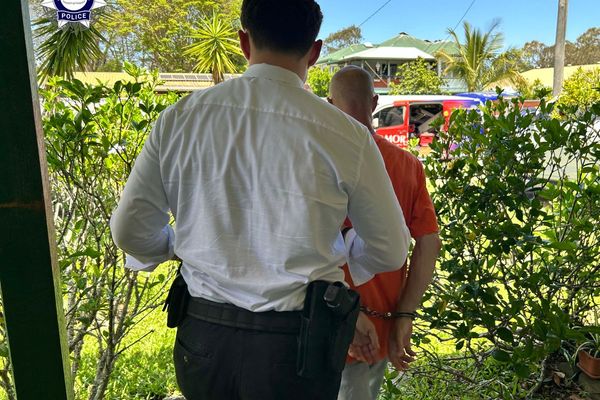
High above the Champsaur Valley, in the southern French Alps, the plateau is shrouded in cream-coloured froth. But it’s not clouds I’m surrounded by; it’s sheep. Transhumance – the driving of animals from winter valleys to high summer pastures – is still practised here, and thousands of animals are swirling around me as I stand with the shepherd who will care for them, alone, for the next four months. The size of the flock is dizzying. I step backwards, to steady myself. And hit a wall. Because I’m not really in the high pastures. I’m at Cinémathèque, a slick new museum of mountain film in the town of Gap, and I’m trying out a virtual reality (VR) headset.
Quieter and more traditional than their northern counterparts, the southern French Alps stretch from Grenoble to Provence. Cinémathèque offers a hi-tech introduction to the region’s deep-rooted mountain culture, but the low-fi version beckons. Practising our own, condensed, form of transhumance my family and I are following a tailor-made itinerary with local outdoor specialist Undiscovered Mountains, spending a couple of nights at La Grange des Écrins, a guesthouse in the valley, then head higher to two mountain refuges.
Écrin (also the name of the surrounding national park) means jewel box and the guesthouse lives up to its name, with gem-coloured textiles and a pool with a view. Run by Jean Mellot and his Taiwanese wife, Meg Liu, this ancient farmhouse connects visitors comfortably with nature. Over plump lamb chops, slivers of earthy Alpine cheese and oomphy shots of génépi, Jean gives us a primer on local shepherding culture. Wolves are the big talking point. After being hunted to extinction in France, they returned in 1992, drifting back over the Italian border. Now the southern Alps have the country’s highest density of them and shepherds are having to change the way they manage their flocks.
It’s not wolves, though, but marmots I see the next day. Undiscovered Mountains’ pick’n’mix approach to activities means that while the rest of the family are off paddling down rivers, clambering up rock faces and pedalling trails above nearby Ancelle, I am hiking around Prapic, the village furthest up the valley. There’s an otherworldly feel to its chalet-style houses, hard-working veg plots and cobbled lanes, and to the mighty peaks, larch forests and orchid-speckled meadows that surround it. On my two-hour stroll from the village to Saut du Laïre waterfall, I see no pylons, no tarmac and no buildings larger than a small chapel. Just peals of thundering water and the comic Whac-A-Mole bobbing of marmots among wild pansies. Stopping for lunch by the cascade, I spot two shepherds’ cabins; this plateau may be quiet now, in spring, but it will soon be swarming with sheep.
I get an insight into what that might be like, for the sheep and the 800 or so shepherds who work across the Alps, the next day. At Maison du Berger, a shepherding museum and education centre in the neighbouring Champoléon Valley, we learn that shepherding is enjoying a resurgence, especially among women, as a new generation embraces traditional pursuits and outdoor work – and rises to the challenge of adding wolf-handling to a skill set that includes navigation, conflict resolution, land management, species protection and animal welfare.
From the museum, in Les Borels, we are following an old transhumance route up to our first refuge, Tourond. Before we tackle the physical mountains, we have culinary ones to climb at the neighbouring Auberge Des Ecrins. Local specialities include tourtons – crisp little pillows of fried pastry stuffed with mashed potato – and oreilles d’âne (donkeys ears) – oven-baked pancakes layered with wild spinach, cream and cheese). Along with cheese, charcuterie and crudités, it’s an edible testament to the work of the shepherds, the meadowy richness of the cured meats and sheep’s milk cheeses underlining the value of all that high-altitude grazing.
Staggering up to Refuge du Tourond afterwards, we follow a path over sun-dried pine needles and the smooth limestone lilt of river-washed stone. An hour or so’s walk beyond the hamlet of Fermonds, we see the Champsaur peak rising battleship-like ahead of us. The scenery is so ruggedly wild that it’s a shock to suddenly spot a roof, and a string of Tibetan prayer flags.
Drawing closer, we’re met by the refuge’s charismatic owner, Stéphane Chevalier, and an Alpine panorama so magnificent that even a VR headset would struggle to convey it. Inside, an elderly hiker is sitting by a wood-burning stove with a glass of beer and board of charcuterie, after a morning’s hike up to the spectacular Cascade de la Pisse.
There are 42 refuges in the Hautes Alpes. Some are run by the Club Alpin Français or the Dauphiné Touristique Society; others – like this one – are independent. Family-friendly Refuge du Tourond sleeps 26 in cosy wood-floored dorms. A disused summer chalet when Stéphane opened it as a refuge 38 years ago (he was only 22), it still has rustic charm, but it also has viewing terraces, showers and, thanks to solar panels, draught beer and machine coffee.
Spreading out sleeping bags on our designated beds and slipping our feet, Cinderella-style, into a row of Crocs until we find the right sizes, we shuffle downstairs for a hiker’s dinner of pea soup, potato and bacon pie with confit duck, bilberry tart and slices of Tomme du Champsaur.
The following morning, over a breakfast of cheese, ham, bread and homemade bilberry juice, I ask Stéphane how he pulls off this hospitality magic trick so far from civilisation. At the beginning of the season, he tells me, he brings in eight tonnes of dry goods by helicopter. Then a friend, Pascal, carries up fresh produce on his back once a week. “It’s a juggling act,” he says, referring to the planning but also to Pascal’s skill – something we appreciate first-hand a few minutes later when Pascal duly arrives laden with eggs, potatoes and tomatoes.
It feels as if we’ve stepped into an older, simpler time, but change is coming to Tourond. Though the refuge will continue, Stéphane is retiring at the end of this season. “I am going to find my wings,” he says, spreading his arms. “It’s time to do my own exploring.”
That afternoon we walk up to our second refuge, the Gîte de l’École in Dormillouse. Said to be the sole permanently inhabited village within a French national park, and only accessible on foot, this huddle of ancient chalets sits up near the treeline, dwarfed by serrated peaks and tumbling cascades. Approaching it, I look up and sway with inverse vertigo as the rock above me soars skywards at almost 90 degrees to the riverbed. Up, up, up we go until, finally, we cross a little footbridge over a ravine and arrive in a meadow laced with buttercups, apple trees and scented paperwhites. Goldfinches are calling and smoke curls from the chimneys of Dormillouse’s larch-roofed cottages.
The most fantastical thing of all, though, is how people managed to survive here, taking what advantage they could of the village’s isolation, long hours of sunshine and avalanche-protected position. A local cave painting points to human activity as far back as 18,000 years ago, and people migrated here in the middle ages to work in nearby silver mines or, in the case of the Vaudois protestants from over the border in Piedmont, to escape religious persecution. By the mid-19th century Dormillouse had a population of 300, scratching a living by renting out high pastures to shepherds and making the most of scarce wood supplies by baking bread once a year, in communal ovens.
The story of their lives – and the priests and teachers who tried to help them before the last inhabitant left in 1954 – is a compelling one, told in panels on the refuge’s walls. It’s a tale of rebirth, too. In the 1970s, hippies moved in and, in the 1980s, families started coming back.
About 20 people live here now and the refuge, in the village’s old schoolhouse, is busy with tourists coming to hike, ski or explore family history. Currently run by Sarah Ginty from England and her French husband, Paul, it’s different from Tourond but they have things in common.
One is the bilberries. “You can’t stay in a refuge without eating bilberry tart. It’s part of the culture,” laughs Sarah, adding that something happens when people sit around the school’s big wooden table. “After that, they don’t mind sleeping in a dormitory together. It’s one of the things I like most about this job. I never interfere. Something just happens when people eat together.”
At the head of the valley is the Freissinières pass. It’s tempting to walk over it, back to Prapic, but our time is up and we’re returning to the valley instead. As we descend, we meet a flock of sheep going the other way. I look at them enviously. I have inadvertently joined a human flock craving the high pastures, and the hospitable shepherding of Sarah and Stèphane.
The trip was provided by Undiscovered Mountains and Haute Alpes. In high summer Undiscovered Mountains’ self-guided five-night hiking holiday costs from €639pp including half-board accommodation and transfers. The refuges mentioned can be visited as part of its three-night summer activity weekends, from €433 adult or €317 child







